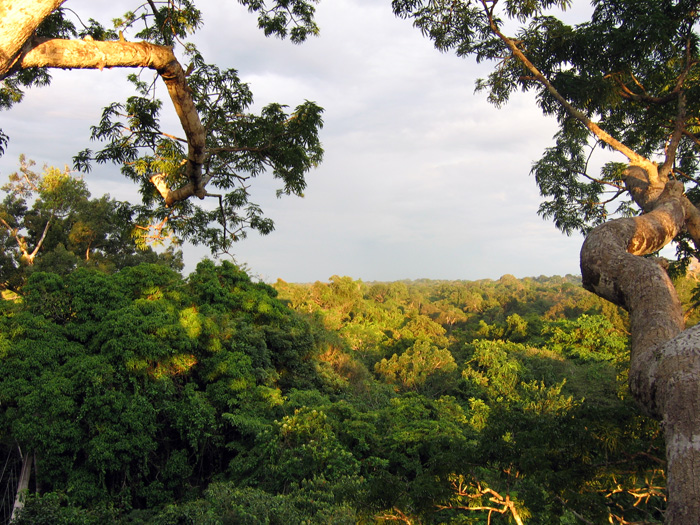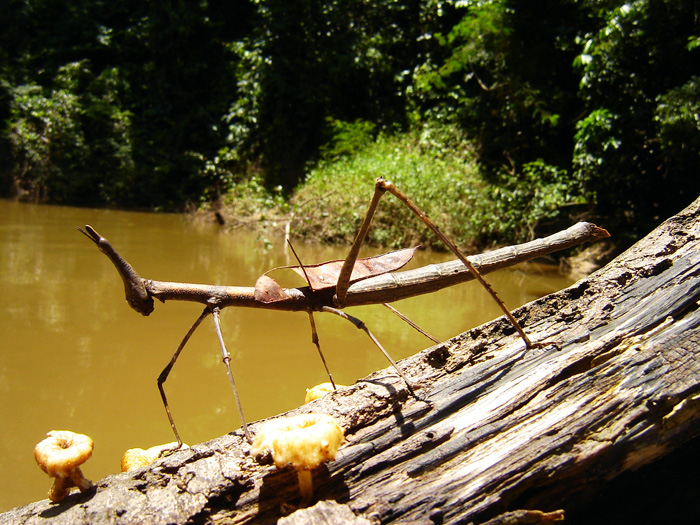Thousands of leaves from different sizes and shapes, different fruits, and deep dark pathways surrounded by trees used by birds as shelters are part of the landscape of Amacayacu parcel, one of the places with the biggest arboreal biodiversity in the world, which is suffering the effects of the climate change phenomenon.
This situation was pointed out by a monitoring of the demography, functioning and variety of the vegetal species, made by researchers from Universidad Nacional de Colombia in Medellin and the Amazon Institute of Scientific Research (Sinchi), located in the Colombian Amazon.
"This classification allows determining, among other aspects, the endangered diversity of vegetal species, those new for science, and timber and non-timber tress," explained Alvaro Duque, professor of the Department of Forest Sciences.
In this regard, Dairon Cardenas, researcher from Sinchi asserted that "one of the main benefits of this study performed in Amacayacu is the contribution to the national Catalog of Biodiversity and to the World Strategy for the Preservation of Plants, since it has identified species with some degree of threat, such as Cedar (Cedrela odorata), timber tree that has been subject of big pressures for its over exploitation."
Until now, 125 thousand individuals have been mapped in 25 hectares of forest, from which 1,000 species have been identified according to their morphological characteristics; among them, some types with timber potential such as Lauracea, Myristicaceae and Lecythidaceae. In addition, several varieties of vegetables with potential for the development of beauty products such as hand creams and shampoos have been identified, as well as for the elaboration of pharmaceutical and medical products.
"We have found species such as assai (Euterpe precatoria), very important from the nutritional perspective and commercialized due to its antioxidant properties; milpesos or seje (Oenocarpus bataua), oil plant with medicinal and cosmetic properties; Chuchuwasa (Maytenus amazonica) used as medicine: Para rubber tree (Hevea brasilienisis), a product of massive use in the car industry, among others, asserted Cardenas.
"We are interested in studying the natural dynamics of this diverse forests and knowing that their response is to abrupt climate changes," asserted Duque.
In order to achieve their objective, the researchers have dedicated their time to describe and inventory each of these timber arboreal individuals of more than 1 centimeter of diameter and 1.30 centimeters high. This way, the experts evaluate the characteristic s of their leaves, fruits and logs.
CO2and the atmosphere
From this sample, it was possible to analyze the impact of the global warming phenomenon on the plants, since some plants respond better than others, whose death occurs rapidly.
This initiative, which selected a zone characterized for its virgin forests, its flora and fauna diversity and its multicolored landscapes, will give the country, according to Duque, unique tools to understand the complex functioning of the natural forest systems of the Amazon region and low tropical humid lands.
The results obtained so far account for the increase of deaths in species of hard wood, as a response to dry season occurred in the Amazon. The study indicates that, during 2010, tree mortality doubled, causing a strong impact.
"When trees die, they stop being CO2 receptors; as a result, this polluting element is released to the atmosphere. Studies performed by researchers from Leeds University (England) revealed that Amazon forests would not be able to absorb 1,500 tons of CO2 from the atmosphere in the period between 2010 and 2011, and other 5,000 million tons would be released into the atmosphere in the next years once these trees rotten up," asserted the researcher from Sinchi.
Global task
This is a long term project that started five years ago with a dedicated work and a continuous search for information. Subsequently, the participation of other institutions of the country will be important to replicate, at a local, regional and global scale, options to manage the forests of the Colombian Amazon.
35 undergraduate and posgrade students of Universidad Nacional de Colombia have joined the study to support the measuring and sample recollection, as well as the identification of species and the analysis of materials.
Amacayacu parcel is part of the global network of the Center for Tropical Forest Sciences, in which other 22 parcel are also members, and whose purpose is to reflect upon current phenomena such as the global climate change, sustainability and the management of forest resources in the world.
The task continues
The researchers from Universidad Nacional de Colombia, aware of the importance of the exploration that permits knowing the history of life of these arboreal species in this Amazon region, are attempting a genetic identification of each species.
This is a difficult task since this vegetation is located in natural parks. Describing the species is just the first step, asserted Professor Alvaro Duque. For this reason, knowing their genetic and chemical structure would allow understanding in a better way the real potential these forests have.
 Correo Electrónico
Correo Electrónico
 DNINFOA - SIA
DNINFOA - SIA
 Bibliotecas
Bibliotecas
 Convocatorias
Convocatorias
 Identidad UNAL
Identidad UNAL




